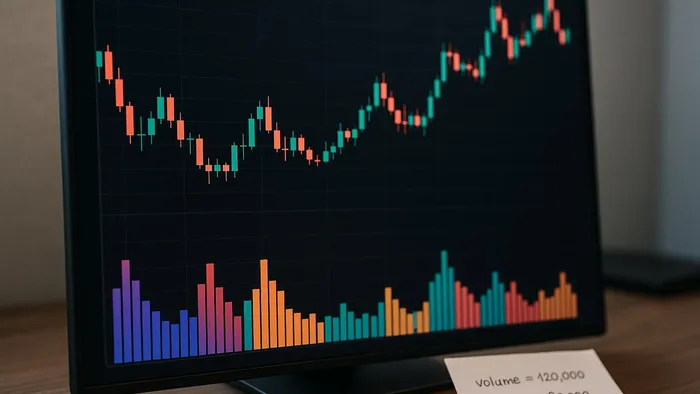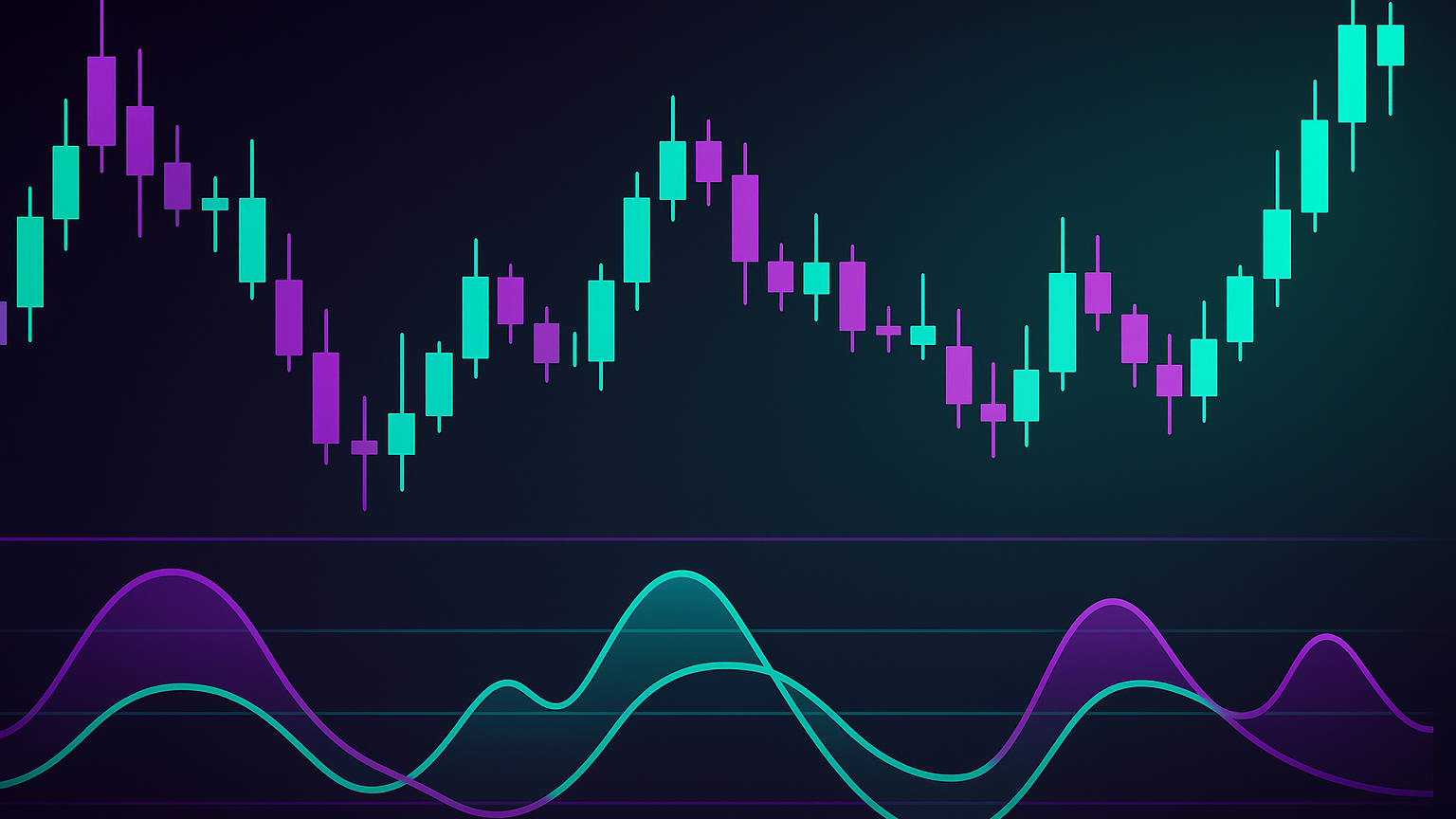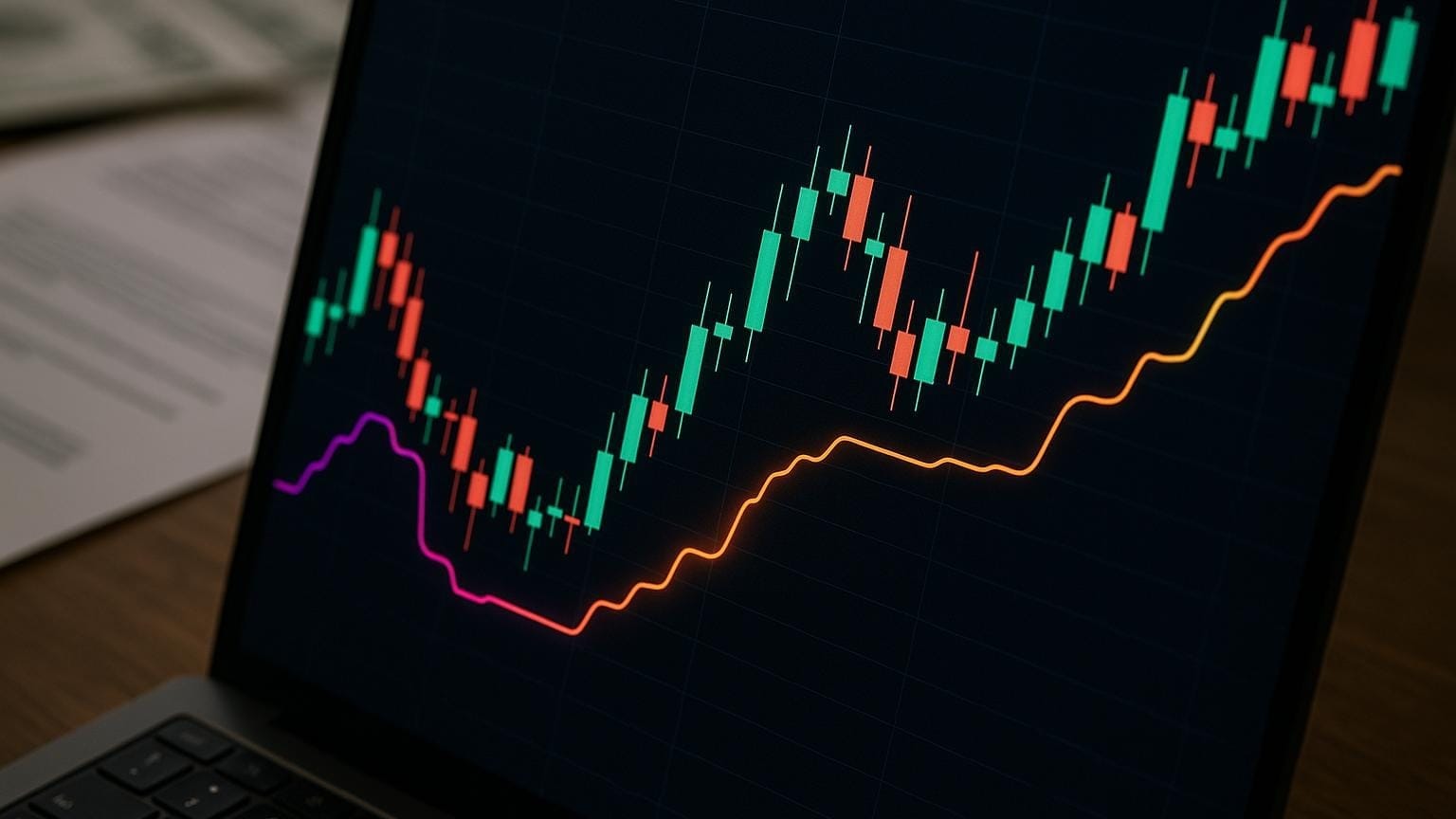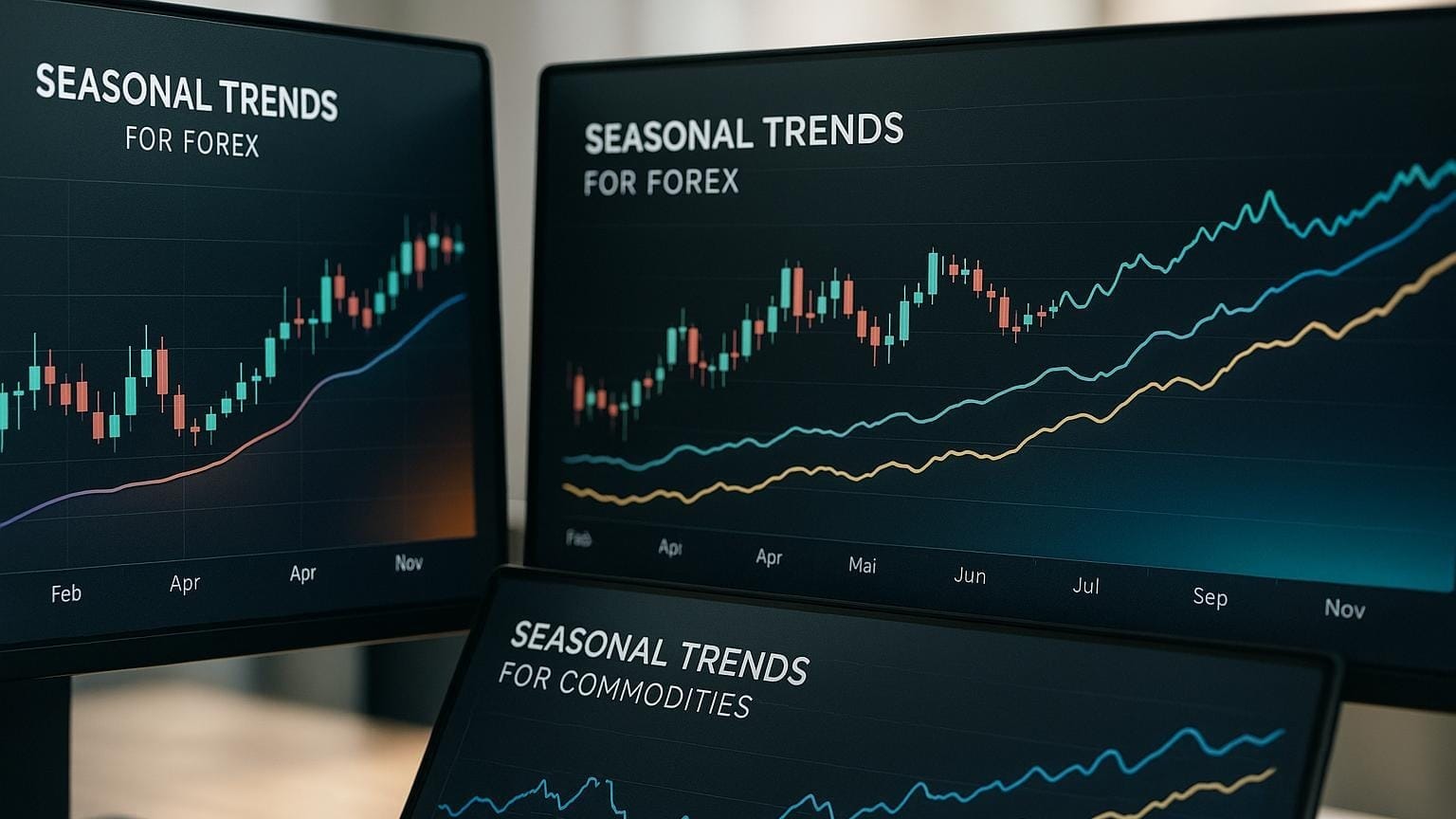Explore the Relative Volume at Time (RVAT) indicator, a tool for detecting unusual market activity through comparative volume analysis.
The Relative Volume at Time (RVAT) indicator compares current trading volume to historical averages at the same time of day. This accounts for predictable volume patterns, like spikes at the market open, offering a more precise way to detect unusual market activity.
Key Points:
- How It Works: RVAT = Current Volume ÷ Historical Average Volume for the same time.
- Why It’s Useful: Highlights volume anomalies that could signal news events, institutional trades, or market sentiment shifts.
- Applications: Spotting breakouts, reversals, or validating price trends.
- Limitations: Less reliable in low-liquidity markets or during one-off events like earnings announcements (what an earnings announcement is).
For advanced traders, LuxAlgo provides RVAT-informed capabilities like real-time alerts, pattern detection, and AI Backtesting. These features enhance volume analysis but still benefit from a solid understanding of RVAT basics.
Quick Comparison:
| Feature | RVAT Indicator | LuxAlgo Tools |
|---|---|---|
| Purpose | Identifies volume anomalies | Combines RVAT with advanced tools |
| Ease of Use | Simple calculation | Offers automation and customization |
| Best For | Day traders, scalpers | Swing traders, algorithmic traders |
| Limitations | Limited in low-liquidity markets | Requires technical expertise |
RVAT is ideal for traders seeking simplicity, while LuxAlgo suits those needing more advanced analysis.
1. Relative Volume at Time Indicator (RVAT)
Calculation Methodology
The Relative Volume at Time (RVAT) indicator works by dividing the current trading volume at a specific time (T) by the historical average volume for that same time over a selected period—commonly 5, 10, 30, or 60 days [1].
For example, if the 30-day average volume at 10:30 AM is 50,000 shares, and today’s volume at that time is 150,000 shares, the RVAT would be 3.0. A value above 1.0 indicates higher-than-average activity, while a value below 1.0 points to lower-than-average activity. Although there’s no theoretical cap on RVAT values, spikes above 4.0 are generally considered noteworthy and often signal significant market activity [1].
This straightforward calculation is a powerful way to identify potential market shifts.
Practical Applications
RVAT is particularly useful for spotting unusual market behavior. Traders rely on it to identify periods of heightened activity that could signal news events, institutional trading, or shifts in market sentiment. It’s also helpful for validating the strength of price movements by analyzing whether they are supported by corresponding volume surges.
For instance, if a trader notices an RVAT of 2.5 at 10:30 AM—indicating that the current volume is 2.5 times the historical average—it could suggest strong market participation, possibly driven by a news announcement or institutional activity. This information might prompt further research or support a trading decision. Additionally, RVAT can highlight potential breakout or reversal opportunities by flagging real-time volume anomalies [1].
Advantages and Limitations
RVAT comes with several strengths but also has its challenges.
One of its major advantages is its ability to detect unusual market activity that might go unnoticed with broader volume metrics. It also strengthens the analysis of price trends or reversals by linking them to time-specific volume spikes. The flexibility to adjust the look-back period and time intervals makes it adaptable to different trading styles and asset classes.
However, RVAT isn’t without limitations. In low-liquidity markets or with thinly traded assets, it may produce false signals, as volume spikes in such environments can be less reliable. The indicator is most effective when paired with other technical or fundamental analysis tools rather than used alone. Additionally, one-off events, like earnings announcements, can distort historical averages and lead to skewed RVAT readings. To address these issues, consider adjusting the look-back period to match an asset’s volatility and liquidity, selecting time intervals that align with your strategy, and regularly updating historical averages to reflect changing market conditions [1].
2. LuxAlgo Volume Analysis Tools
LuxAlgo provides tools that make time-specific volume insights easier to access and more actionable. By combining RVAT-informed analysis with features from Price Action Concepts (PAC), Signals & Overlays (S&O), and the Oscillator Matrix (OSC) on TradingView, LuxAlgo helps traders assess and act on volume trends effectively.
Practical Applications
The Price Action Concepts (PAC) toolkit offers features like volumetric order blocks, market structure analysis, and pattern detection. These are especially useful when RVAT highlights unusual volume activity. For instance, PAC can confirm whether these volume spikes align with critical support or resistance levels, helping validate potential breakout or reversal opportunities.
The Oscillator Matrix (OSC) complements RVAT by adding real-time divergence detection and money-flow context. This helps traders determine if volume surges are tied to accumulation or distribution phases and offers a clearer read on sentiment during high-volume periods.
Additionally, LuxAlgo’s screeners let traders filter assets based on volume activity across multiple timeframes. The AI Backtesting Assistant enables users to test strategies that incorporate RVAT thresholds, helping evaluate how these parameters perform across market conditions. Together, these features make it easier to spot securities with unusual volume activity and refine RVAT-based trading strategies.
Advantages and Limitations
LuxAlgo’s integrated features offer several benefits beyond standalone RVAT analysis. For example, the Custom Alert Creator allows traders to set notifications when RVAT reaches specific levels, minimizing constant chart monitoring and letting users combine volume signals with other technical indicators for a more comprehensive approach.
Real-time updates ensure that RVAT-related readings reflect market changes quickly, giving traders the ability to act on emerging volume anomalies. These capabilities are most effective when traders understand RVAT concepts and interpret signals within their own strategy frameworks.
Extensive customization can feel overwhelming for new users. While LuxAlgo provides educational resources and support, identifying the root cause of unusual volume—news, institutional flows, or technical factors—still requires broader market context.
Pros and Cons Comparison
One drawback of both RVAT and platform-based volume tools is that they don’t track individual trading performance. While they excel at offering technical signals to identify volume anomalies, they don’t replace trade journaling or risk management.
This means traders remain responsible for assessing performance and maintaining sound risk practices. Success typically comes from blending objective signals with experience and thorough strategy testing.
Conclusion
Deciding between the Relative Volume at Time (RVAT) indicator and LuxAlgo’s volume analysis features comes down to your preferences, technical expertise, and need for automation. Both bring unique strengths that can refine volume analysis.
RVAT stands out for simplicity and quick anomaly detection. Its clear-cut calculation highlights when current volume deviates from historical averages at specific times—useful for day traders and scalpers who need fast reads without complexity.
LuxAlgo shines with advanced features and automation. With real-time alerts and integration with other indicators, it suits swing traders, algorithmic traders, or anyone tracking multiple assets simultaneously.
For a straightforward approach to identify volume anomalies, RVAT delivers. For deeper analysis, automated workflows, and multi-indicator compatibility, LuxAlgo’s features are a strong fit.
FAQs
How can traders use the Relative Volume at Time (RVAT) indicator to spot unusual market activity?
Traders can use the Relative Volume at Time (RVAT) indicator to spot unusual market activity by comparing the current trading volume to historical averages at specific times of the day. Significant deviations—like sudden spikes or drops in volume—may signal changes in market sentiment, institutional involvement, or potential price reversals.
When paired with other technical indicators, RVAT can offer a clearer picture of whether it’s the right moment to enter or exit a trade. This combination helps traders anticipate trends more effectively and avoid misleading signals, ultimately refining their strategies.
How can traders address the challenges of using the Relative Volume at Time (RVAT) indicator in low-liquidity markets?
In low-liquidity markets, RVAT can exaggerate false signals. To navigate this, monitor overall liquidity levels and broader volume trends. Cross-check volume anomalies with additional indicators and market context to avoid being misled.
Adding liquidity-flow analysis and reviewing market stress indicators can provide a clearer picture of underlying conditions. Traders might also adjust position sizing, require stronger confirmations, or focus on more liquid assets to reduce slippage and noise.
How does LuxAlgo enhance the Relative Volume at Time (RVAT) indicator for better volume analysis?
LuxAlgo enhances RVAT with features that make analyzing volume patterns easier. With automatic detection of volume spikes, divergences, and key price zones, traders can quickly identify unusual market movements and uncover potential opportunities.
The Volumetric Toolkit dives deeper by breaking down buy and sell volumes at specific price points. This detailed context works alongside RVAT, helping traders spot trends and fine-tune strategies.
References
LuxAlgo Resources
- Volume Forecasting – Library
- Volumetric Toolkit – Library
- Market Sentiment Technicals – Library
- Liquidity (PAC) – Docs
- Signals & Overlays Alerts – Docs
- Pattern Detector – Library
- AI Backtesting Assistant – Main Page
- Toolkits on TradingView – Overview
- Oscillator Matrix (OSC) – Docs
- Order Blocks (PAC) – Docs
- Market Structures (PAC) – Docs
- Support & Resistance with Breaks – Library
- Breakout Detector (Prev/MTF High-Low) – Library
- Triangular Momentum Oscillator – Library
- Reversal Spotting – Blog








